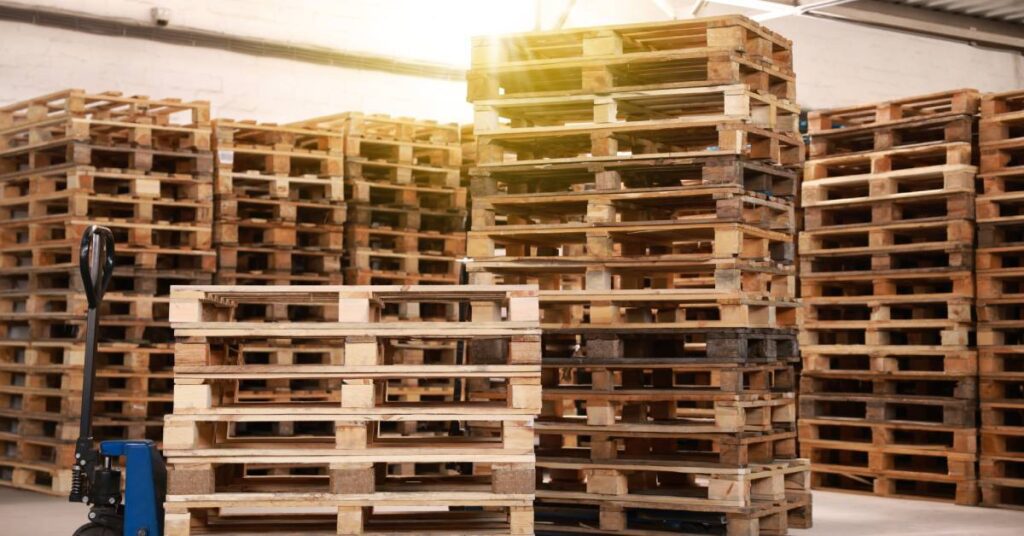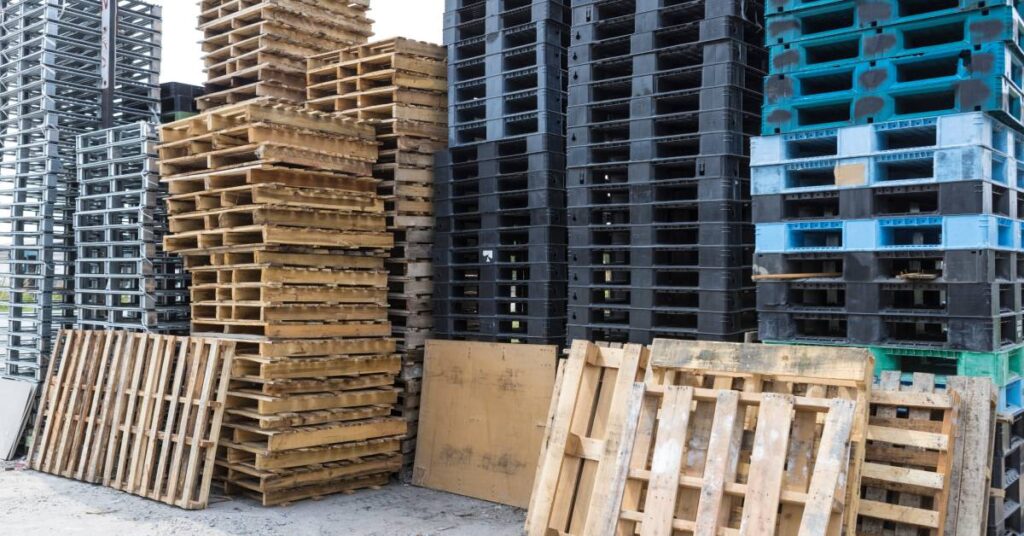Pallets are a major component in the global supply chain. Whether you own a small retail business or manage a local warehouse, pallets help you efficiently organize, transport, and store products. However, making the most of pallets requires an understanding of some of their critical aspects. Improper use, neglect, or a lack of awareness about pallet management can lead to increased costs and operational inefficiencies.
Logical Logistics understands the business, and we’re here to help you out with a few important things all pallet users should know. These tips can empower you to streamline your operations and avoid some common pitfalls.
Types of Pallets and Their Unique Advantages
While nearly all pallets serve similar purposes, that doesn’t mean they’re all the same. Understanding the different types can help you decide which options best suit your business or specific needs.
We typically categorize pallets by material, such as wood, plastic, or metal. Wooden pallets are the most common and affordable option for general shipping purposes. Plastic pallets, on the other hand, offer more durability and moisture resistance. Wooden pallets are a great, all-purpose option that works for nearly every industry.
Metal pallets, though costlier, work well for heavy loads and industries requiring long-term storage. The type of pallet you use can significantly impact the safety, efficiency, and cost-effectiveness of your operations. Choosing the right one for your business sets the foundation for smoother logistics.
Standard Pallet Sizes and Why They Matter
Pallets come in various global sizes, but there are a few commonly-recognized standard dimensions. For instance, in North America, the standard pallet size is 48 inches by 40 inches, also known as the GMA (Grocery Manufacturers Association) pallet. However, Europe often uses the EUR pallet or “Euro Pallet,” measuring 1200 mm by 800 mm. The size of your pallet matters because it affects warehouse storage compatibility, transportation costs, and stackability.
It’s always a good idea to know the general pallet dimensions in your region and ensure that your operations can work with these industry standards. Working with the right information reduces instances of mishandling and the inefficiencies that come from mismatched pallet sizes.
Pallet Load Capacity and Weight Considerations
Overloading pallets can compromise structural integrity, increase the chance of accidents, and damage the goods you’re transporting. Keep the static and dynamic load capacity of your pallets in mind.
The static load refers to the weight a pallet can hold while stationary, such as when they are stacked in storage. Dynamic load capacity measures how much the pallet can safely hold while being moved with a forklift or pallet jack.
For small business owners, adhering to these load limits helps reduce the risk of product damage and workplace hazards. Keeping detailed records of pallet weights also allows you to maintain compliance with transportation regulations.

Proper Storage Techniques for Pallets
Improperly storing your pallets is inefficient and even dangerous. You can waste space, damage equipment, and risk the safety of your crew.
Always store pallets flat and avoid leaning them against walls, which can weaken their structural stability over time. Maintain a dry and well-ventilated storage area to reduce the risk of moisture damage, especially when you’re using wooden pallets. Even with wooden pallets, you can utilize pallet covers to help preserve their condition.
The Importance of Regular Pallet Inspections
Something important all pallet users should know is the importance of regular inspections. Pallets are essential equipment, and you should always check that they’re still fit for use.
Look for visible signs of damage such as cracks, splinters, or warping. Damaged pallets can compromise the safety of your staff and goods, and they may also lead to costly liability issues.
It’s a good idea to set up a schedule for pallet inspections so that you can replace worn-out or heavily damaged pallets as soon as possible. Investing in this proactive measure reduces downtime, promotes safety, and prevents unexpected complications.
How To Recycle or Dispose of Pallets Responsibly
You should always dispose of pallets responsibly when they reach the end of their usefulness to minimize their environmental impact. You can typically recycle wooden pallets or repurpose them into furniture, décor, and other creative projects.
Certain regions offer pallet recycling initiatives where you can drop off your unusable pallets for processing. For example, here at Logical Logistics, we commit ourselves to sustainability by offering our customers recycling and buyback options on pallets.
For small business owners, exploring recycling or buyback programs can help reduce costs, demonstrate environmental commitment, and free up storage space.
Maximizing Efficiency With Pallet Management Systems
Some businesses see success by implementing a pallet management software system. These systems track the movement, condition, and location of pallets in your inventory, enabling better organization. Advanced systems may also provide analytics to optimize utilization rates and recommend replacement schedules.
Adopting a pallet management system is particularly useful for businesses that deal with large inventory turnover. These systems eliminate guesswork, improve efficiency, and reduce the chance of errors in your daily operations.
Key Handling Equipment Needed for Safe Pallet Use
Having the right equipment can help a lot when it comes to safely and efficiently handling your pallets. You want to make sure that your pallet jacks and forklifts are compatible with the pallets that you use for your business.
Every forklift operator should have proper training for their own safety—mishandling pallets can result in accidents or damaged goods. Using suitable equipment not only enhances productivity but also protects both your staff and your products, creating a safer and more efficient working environment.

Compliance With Safety and Legal Standards
Every business must adhere to relevant safety and legal standards when using pallets. For instance, the Occupational Safety and Health Administration (OSHA) mandates proper pallet stacking techniques to avoid workplace injuries. If your business exports goods to other countries, your pallets need to comply with specific standards like ISPM 15, which involves heat-treatment requirements to prevent pest infestations.
Understanding and maintaining these compliance standards reduces the risk of fines, penalties, or disruptions to your business operations.
Take Control of Your Pallet Operations
Managing pallets effectively is critical for small business owners looking to optimize operations, reduce costs, and ensure workplace safety. By understanding different types of pallets, investing in proper maintenance, and ensuring compliance with regulations, you can take full control of your logistics.
Partner with Logical Logistics today and take the next step in optimizing your pallet distribution. Our expert team is ready to help you streamline your supply chain, cut costs, and ensure efficiency. Contact us now to learn more about our tailored solutions for your business.

